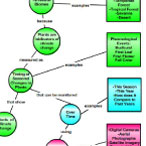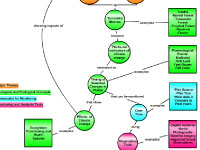|
|
Click Images to Enlarge
|
||||||||
Click Buttons for Presentation Videos & Maps |
About this Workshop:
For this workshop, 12 informal educators from the New England area (including the Seacoast Science Center and New England Aquarium) were matched with ocean and climate scientists from the University of New Hampshire to improve their collective understanding of Earth's climate and ocean systems. [more]
About this Scientist:
Annette Schloss works with scientists, teachers and informal educators to bring global climate change data and research discoveries into classrooms, informal science centers, and citizen monitoring groups.
At the University of New Hampshire, Annette manages EOS-WEBSTER, a large digital library of local, regional and global Earth Science Data, and has been behind the scenes in online tools for visualizing coastal ocean satellite imagery and sea ice imagery in the polar regions, Landsat images for studying vegetation and the GLOBE Carbon Cycle Project. She's also working on a new Picture Post initiative to help citizens and monitoring groups to use digital photography for observing change-over-time in their own environment. [more]












